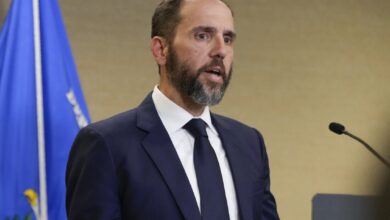
President-elect Donald Trump is reportedly preparing a peace proposal aimed at halting the ongoing war between Russia and Ukraine. Central to the plan are provisions for a permanent ceasefire and the establishment of a demilitarized zone, which would be monitored by European troops, such as forces from Poland, Germany, Britain, and France. Notably, the proposal excludes American or United Nations troops from peacekeeping roles, reflecting Trump’s broader policy of limiting U.S. military commitments abroad.
The proposed plan would freeze the current front lines, where Russia holds approximately 20% of Ukrainian territory, including parts of eastern Ukraine and Crimea. This would effectively halt further fighting but would leave significant portions of Ukraine under Russian control. In exchange, the U.S. would continue supplying Ukraine with military aid, including arms and training, to deter future aggression. However, the proposal also requires Ukraine to suspend its NATO membership ambitions for at least 20 years, a condition that could significantly alter the country’s strategic alignment and security framework.
Trump’s team has justified the exclusion of U.S. troops by emphasizing the importance of European allies assuming responsibility for regional stability. “We are not sending American men and women to uphold peace in Ukraine,” a Trump advisor explained, adding that European forces should take the lead in maintaining the ceasefire. Trump has consistently emphasized his desire to end the war quickly and bring both sides to the negotiating table, though he has avoided disclosing specific details about his broader strategy.
The proposal faces significant challenges. Ukrainian President Volodymyr Zelensky has repeatedly ruled out ceding territory or compromising on Ukraine’s sovereignty. Kyiv’s leadership has also expressed strong opposition to any plans that involve postponing NATO membership, a cornerstone of Ukraine’s long-term defense strategy. Similarly, NATO allies, particularly in Eastern Europe, are wary of any arrangement that might be perceived as legitimizing Russian territorial gains or weakening the alliance’s deterrence posture.
The response from Moscow is equally uncertain. While Russia has publicly demanded Ukrainian neutrality and recognition of its claims over occupied territories, it remains unclear whether President Vladimir Putin would accept such a demilitarized zone arrangement. Analysts suggest that freezing the conflict could give Russia time to consolidate its control over occupied regions and prepare for potential future offensives.
Critics of the plan argue that it could embolden Russia, undermine Ukraine’s sovereignty, and set a dangerous precedent for international conflicts. However, Trump’s advisors appear focused on reducing U.S. involvement in the war and shifting the burden of maintaining peace to European partners, in line with Trump’s campaign promises to prioritize American interests and avoid “endless wars”.
If implemented, this plan would mark a significant departure from the Biden administration’s approach, which has emphasized unwavering support for Ukraine “as long as it takes” to fully reclaim its territory. With Trump’s inauguration scheduled for January 2025, the international community is closely watching how these negotiations might shape the future of the war and the broader geopolitical landscape.




